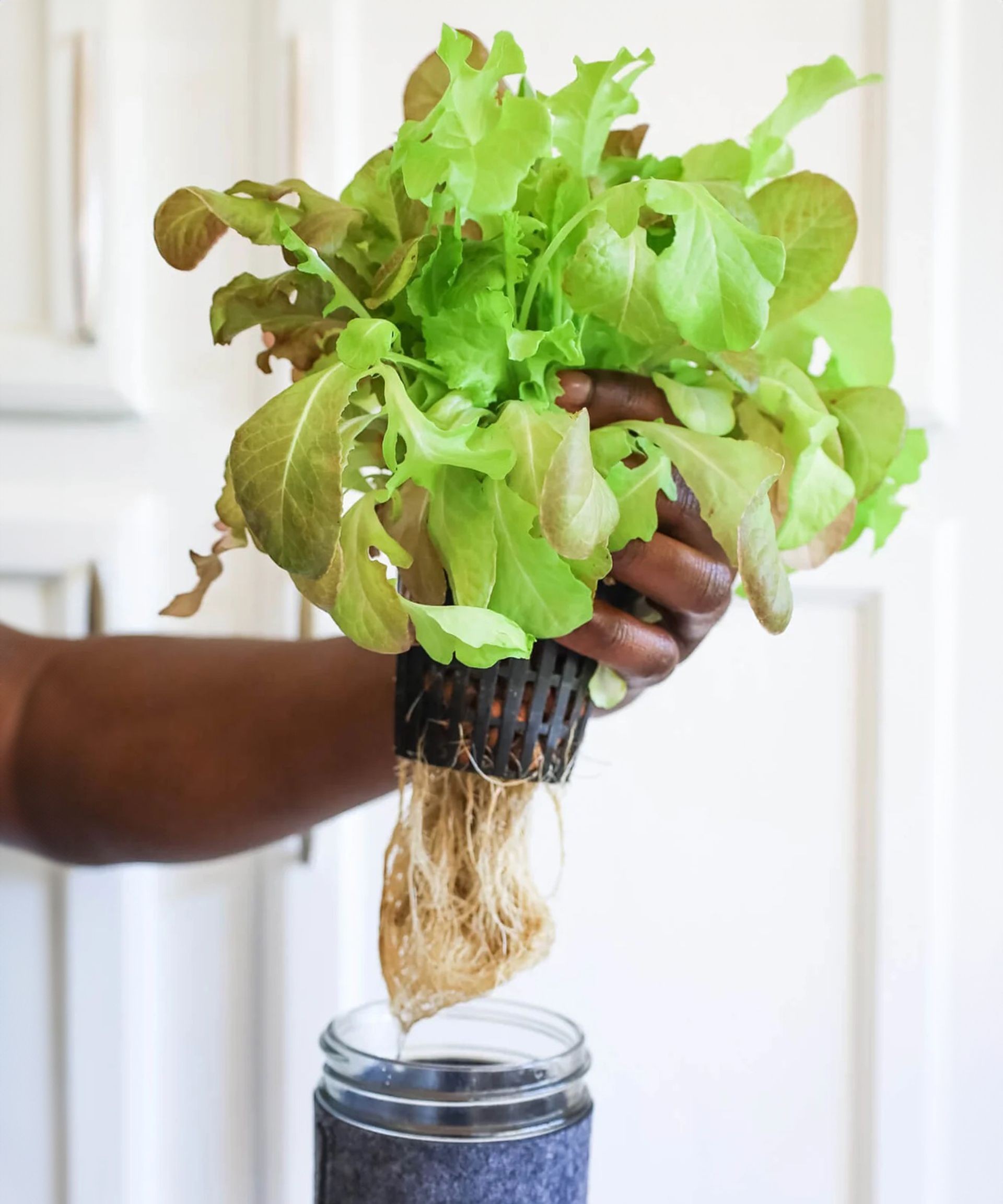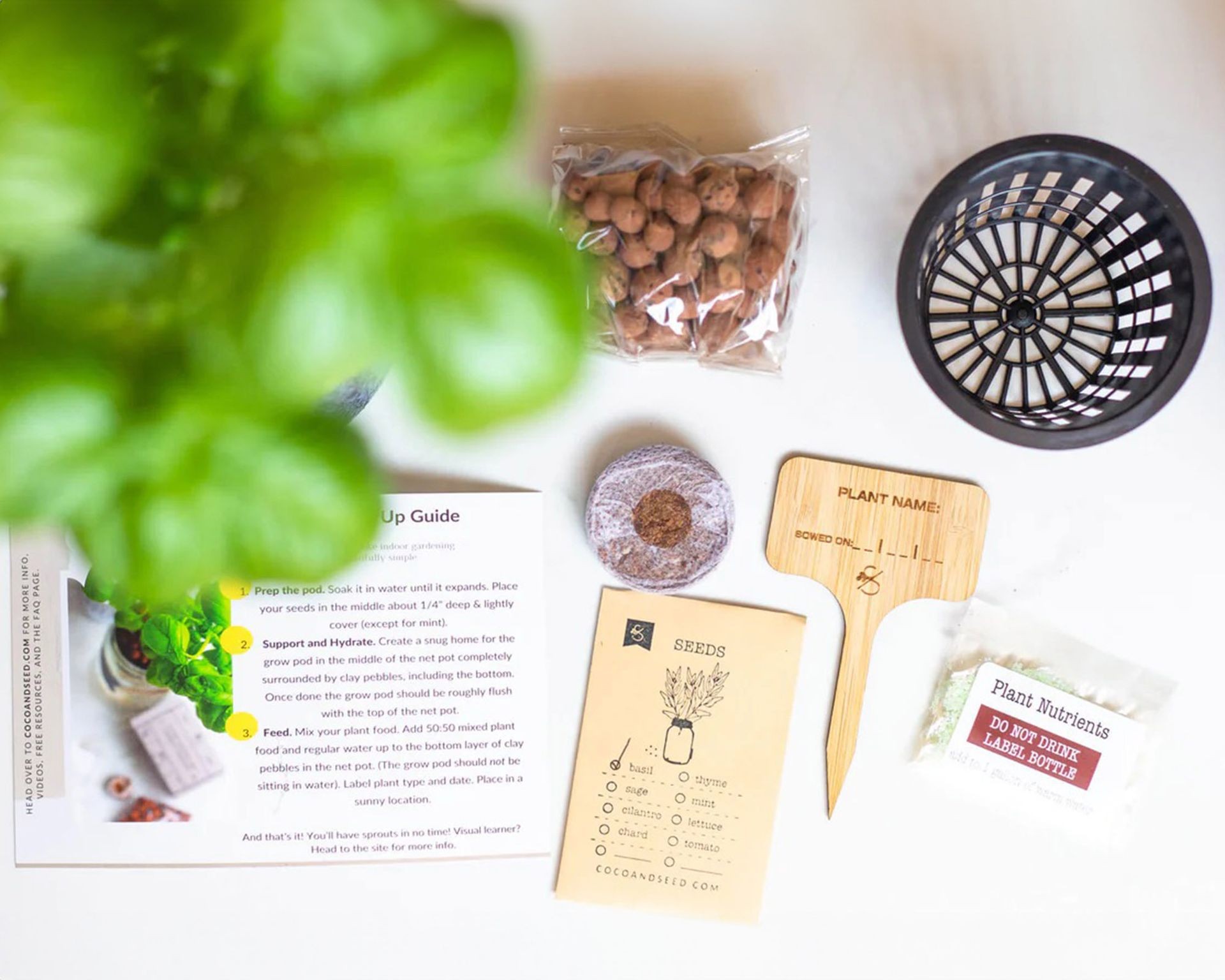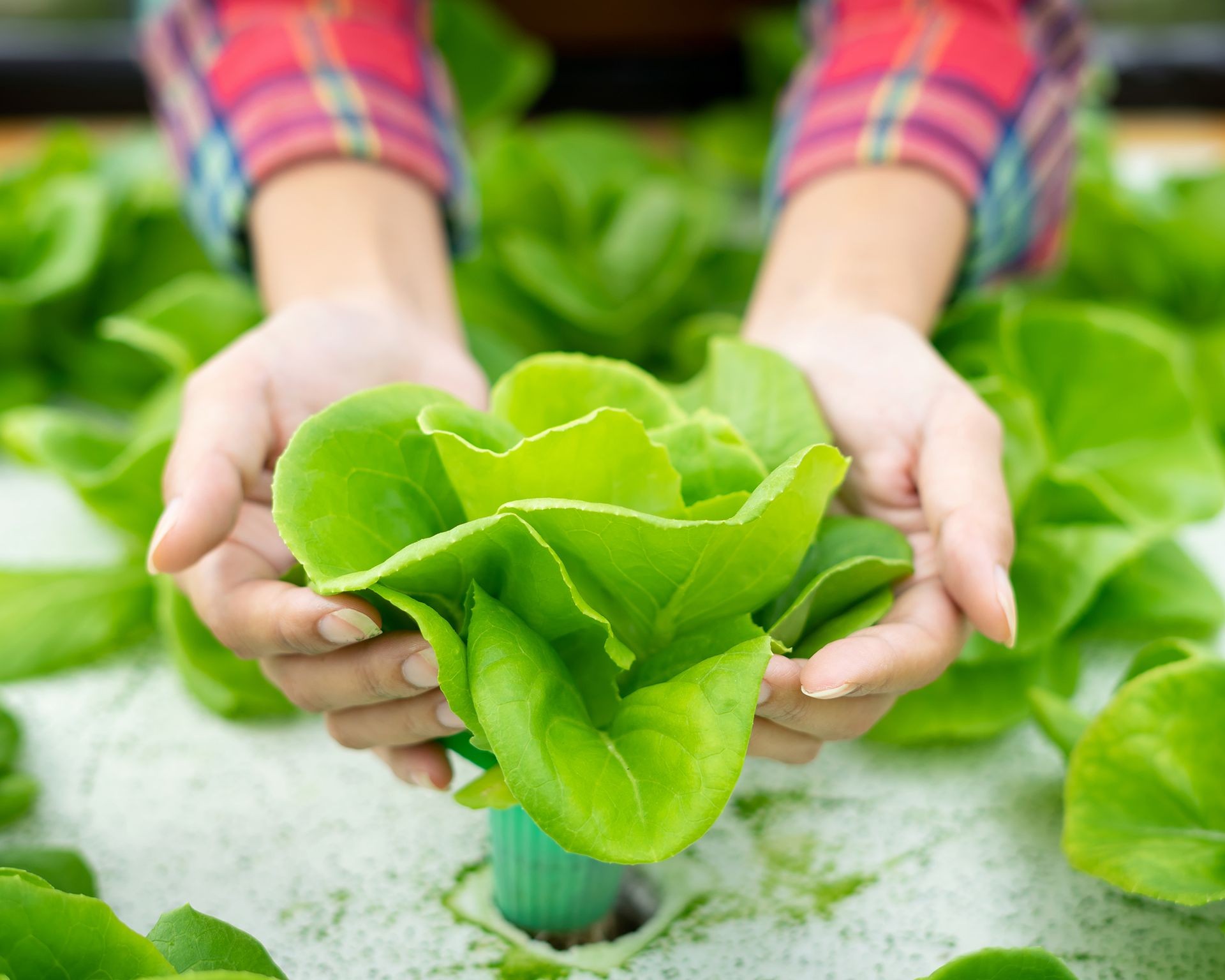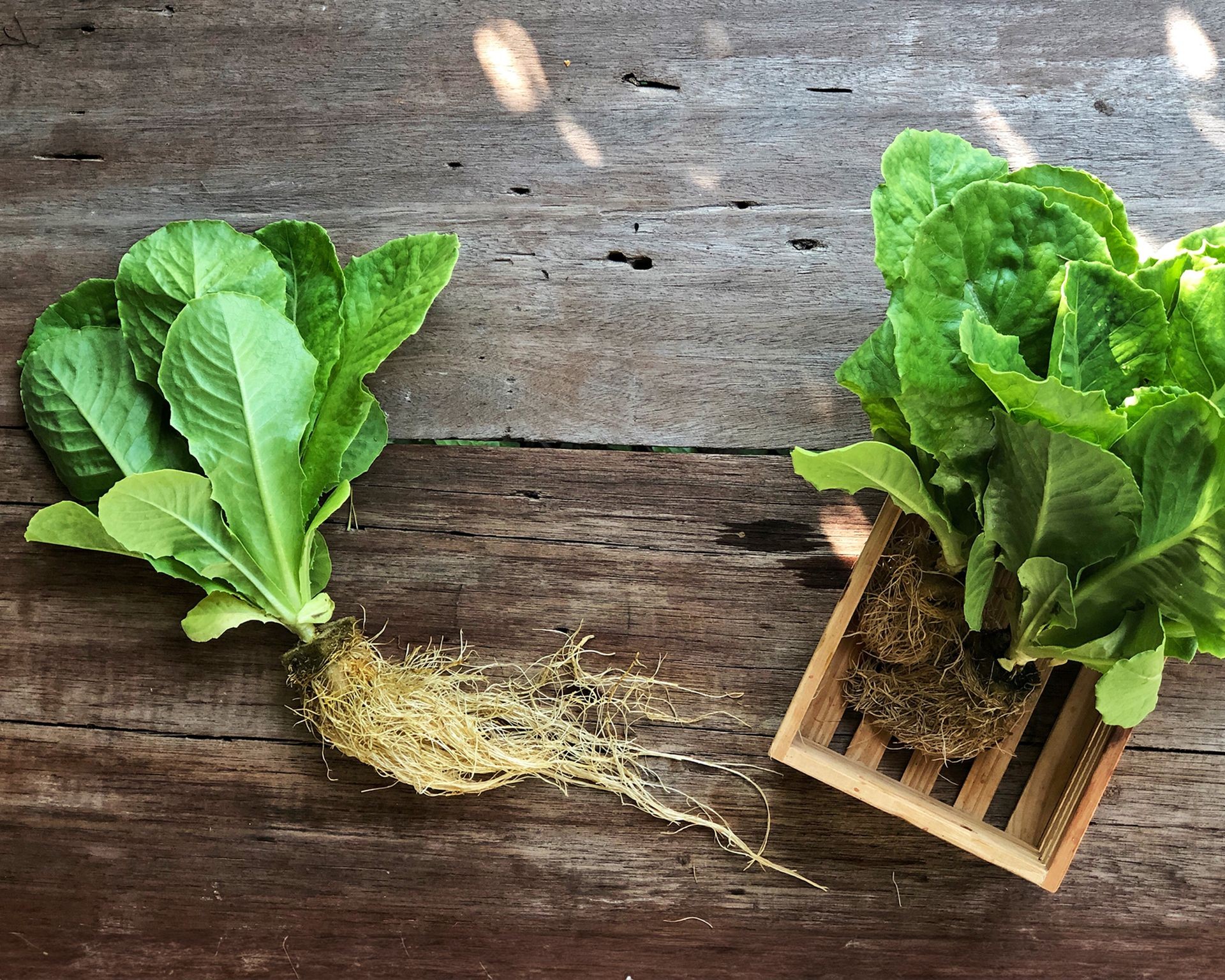No products in the cart.
NEWS
Grow Fresh Lettuce Hydroponically Indoors: A Simple Guide
Imagine plucking vibrant, crisp lettuce leaves just steps from your kitchen counter, any day of the year, regardless of the weather outside. This isn’t a far-fetched dream; it’s the everyday reality of growing lettuce hydroponically indoors. As a long-time advocate for innovative gardening techniques and content creator for Biogarden.asia, I’ve seen firsthand how accessible and rewarding this method can be for anyone craving fresh greens. Whether you have a spacious home or a small apartment, a sunny windowsill or a simple grow light is all it takes to start your own year-round “salad factory.”
Hydroponics, the science of growing plants in water without soil, might sound technical, but at its core, it’s about providing roots with direct access to the water and nutrients they need. Instead of soil, inert materials like clay pebbles or rockwool offer stability for the roots, while essential plant nutrients are dissolved directly into the water solution. This soil-free approach simplifies the growing process, often leading to faster growth and cleaner produce. Getting started with indoor hydroponic lettuce requires minimal equipment and opens up a world of effortless harvesting.
 Freshly harvested hydroponic lettuce grown indoors
Freshly harvested hydroponic lettuce grown indoors
Why Choose Hydroponic Lettuce Indoors?
Lettuce is known for being relatively easy to grow in traditional gardens or pots. So, why go the hydroponic route, especially indoors? The advantages are numerous and compelling:
- Spotless Leaves: One of the most common frustrations with garden lettuce is dealing with soil particles clinging stubbornly to the leaves, no matter how much you wash them. With hydroponics, soil is eliminated, meaning your harvested lettuce is inherently clean and ready for your salad bowl with minimal rinsing.
- Freedom from Pests: Outdoor gardens are magnets for slugs, aphids, deer, and other critters that can decimate a lettuce patch overnight. Growing indoors creates a protected environment, shielding your precious harvest from common garden pests without the need for pesticides.
- Year-Round Abundance: Weather becomes irrelevant when you grow indoors. Extreme heat, unexpected frosts, or torrential rain won’t impact your lettuce supply. By controlling the indoor environment, you can ensure a continuous harvest of fresh leaves every single day of the year.
- Gardening Without a Garden: Lack of yard space is no longer a barrier to enjoying home-grown vegetables. Hydroponic setups are compact, making them perfect for windowsills, countertops, or small indoor spaces. This is a game-changer for apartment dwellers or anyone with limited outdoor area.
Essential Supplies for Your Hydroponic Setup
Starting your indoor hydroponic lettuce journey doesn’t require a large investment or complex equipment. The basic components are simple and readily available:
- A Growing Container: A container to hold your nutrient solution is essential. A clear glass jar or a food-grade plastic container works well. Clear containers are useful initially as they allow you to easily observe root growth and water levels, though covering them later is beneficial to prevent light exposure to the roots and solution. Choose one wide enough to support the plant as it grows.
- A Mesh or Net Pot: This small pot, often made of plastic mesh, is designed to fit into the opening of your container. It holds the plant and growing medium, allowing the roots to grow down into the water reservoir below.
- A Growing Medium: Instead of soil, hydroponics uses inert materials to anchor the plant roots and provide aeration. Clay pebbles (leca), rockwool, perlite, or coconut coir are popular choices. Clay pebbles are particularly good for simple systems like jars due to their weight and porosity.
- Seeds or Seedlings: Select a variety of lettuce that is well-suited for leaf harvesting (like loose-leaf varieties) rather than head formation. Starting with quality seeds is key.
- Hydroponic Nutrient Solution: Regular plant fertilizers designed for soil won’t work correctly in water-based systems. You need a specialized liquid fertilizer formulated for hydroponic use, containing the specific macro and micronutrients plants need in a soluble form. Follow the product’s mixing instructions carefully.
- A Light Source: Lettuce needs light to grow. A sunny south-facing window can provide enough light during many parts of the year. For consistent growth, especially during shorter days or in less sunny locations, a full-spectrum LED grow light is a highly effective and energy-efficient option.
 Supplies needed for a simple indoor hydroponic lettuce system
Supplies needed for a simple indoor hydroponic lettuce system
Many beginners find it easiest to start with a simple kit that provides most or all of these components, designed specifically for small-scale indoor growing like a mason jar system.
Planting Your Hydroponic Lettuce: Step-by-Step
Getting your hydroponic lettuce started is a quick and satisfying process. Here’s a simple method:
- Prepare the Growing Medium: If using a compressed germination plug (often included in kits), place it in a small dish of water to allow it to expand fully. If using loose medium like clay pebbles, prepare your net pot by adding a shallow layer of pebbles at the bottom.
- Sow Seeds: Once the plug is expanded or your medium is ready in the net pot, sow a few lettuce seeds (typically 2-3 to account for germination variability) about 1/4 inch deep. Gently cover the seeds with a small amount of the growing medium or plug material.
- Assemble the Net Pot: Place the planted germination plug or the seeds nestled in their medium within the net pot. Add more growing medium around the plug/seeds until it’s snug and the top of the medium is roughly level with the rim of the net pot. This secures the young plant.
- Prepare the Nutrient Solution: Follow the instructions on your hydroponic fertilizer to mix the correct concentration of nutrients with water. Use room temperature water.
- Fill the Container: Place the net pot assembly into your chosen container (jar, reservoir, etc.). Carefully pour the mixed nutrient solution into the container until the very bottom of the net pot, where the roots will eventually grow, is submerged. The seeds or germination plug themselves should not sit directly in the standing water at this stage; the goal is for the water to wick up through the growing medium to reach the seeds and young roots.
- Provide Initial Care: Place the container in your chosen location – a sunny windowsill or under a grow light. If using a clear container, wrap the sides with something opaque (like paper or a sleeve) to block light from reaching the water, which helps prevent algae growth.
If you’re starting with small lettuce seedlings purchased from a nursery, you can skip the seed germination step. Gently rinse any soil from the seedling roots and carefully place the roots down into the growing medium within the net pot. Ensure the base of the plant stem is at the surface of the medium. Fill the reservoir with nutrient solution so the roots are submerged.
Caring for Thriving Hydroponic Lettuce
Once planted, hydroponic lettuce requires relatively little hands-on work compared to soil gardening. However, consistent monitoring is key to healthy growth:
- Water Level: Lettuce plants are mostly water and lose moisture through transpiration. Check the water level in your reservoir every few days. As the roots grow into the reservoir, ensure they remain consistently submerged in the nutrient solution. Top up with fresh nutrient solution as needed, or just plain water if the level drops significantly between nutrient additions. Occasionally refreshing the entire solution can help prevent nutrient imbalances or pathogen buildup.
- Nutrient Strength: Your fast-growing lettuce will quickly absorb the initial nutrients. Refer to your hydroponic fertilizer instructions for the recommended feeding schedule. Typically, you’ll add more nutrient solution or change out the reservoir solution periodically (e.g., every 1-2 weeks for small systems) to ensure the plants have access to all necessary elements.
- Lighting: Lettuce thrives with consistent light, ideally 12-16 hours per day. A sunny window may suffice, but a dedicated grow light ensures optimal and rapid growth, especially during darker months or in less ideal locations. Position the light a few inches above the plants and adjust as they grow taller.
- Temperature: Lettuce prefers cooler temperatures, ideally between 60°F and 70°F (15°C to 21°C). Avoid placing your setup near heat sources or in direct hot sunlight that might overheat the water.
- Air Circulation: Good airflow helps strengthen plants and prevents fungal issues like mold. A gentle fan blowing across your plants for a few hours a day is beneficial. Simply opening a nearby window regularly can also provide adequate circulation.
 Checking the health and growth of hydroponic lettuce indoors
Checking the health and growth of hydroponic lettuce indoors
Consistent care, especially maintaining water and nutrient levels, will reward you with fast-growing, healthy lettuce.
Harvesting for Continuous Freshness
One of the most exciting moments is harvesting your first leaves! Hydroponic lettuce can be ready for its first harvest surprisingly quickly, often within 3-4 weeks from seeding. The beauty of leaf lettuce, especially when grown hydroponically, is that you don’t have to harvest the entire plant at once.
Employ the “cut and come again” method for a prolonged harvest. Instead of pulling the whole plant, simply harvest the larger, outer leaves as you need them. You can gently peel them away from the base or use clean scissors or snips to cut them close to the plant’s stem, being careful not to damage the growing point in the center.
 Harvesting fresh outer leaves from a hydroponic lettuce plant
Harvesting fresh outer leaves from a hydroponic lettuce plant
By leaving the smaller inner leaves intact, the plant will continue to grow and produce more leaves, providing you with multiple harvests over several weeks, often up to two months or even longer under ideal conditions. Eventually, the plant will “bolt,” sending up a central stalk to flower and produce seeds. This is a natural part of its life cycle, but it causes the leaves to become smaller and develop a bitter taste. When this happens, it’s time to start a new plant to maintain your continuous supply. Staggering plantings every few weeks ensures you always have fresh lettuce ready for harvest.
Growing lettuce hydroponically indoors is a simple, clean, and incredibly rewarding way to bring fresh, nutritious greens into your home year-round. It’s a project accessible to anyone, regardless of gardening experience or available space.
Ready to taste the difference fresh, home-grown hydroponic lettuce can make? Explore the supplies and resources available at Biogarden.asia to get started on your indoor growing adventure today!



